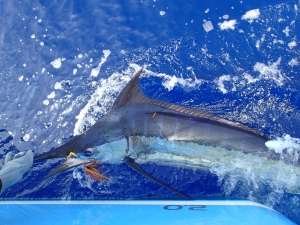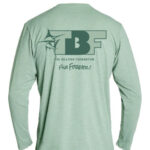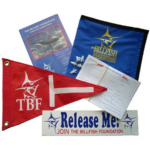
With the year coming to a close, we thank you for your support, as we reflect on TBF’s key contributions in 2020.
- Continued to advance development of a cutting edge spatial distribution model for swordfish and blue marlin, which when completed can be applied to an array of species. In addition, TBF’s scientist continues to verify methods for estimating abundance of highly migratory species based on pelagic longline reported landing data. TBF’s scientist, Dr. C. Phillip Goodyear, is the leading expert in stock analysis and modeling, hence his research is cited by scientists worldwide.
- Advanced discussion with the Secretary of Commerce’s staff on conservation and economic negatives that will follow if Closed Zones in the Gulf of Mexico and off Charleston and Florida’s East Coast are opened to pelagic longline fishing. Subsequent to discussion, the NMFS launched research that is assessing areas within the Closed Zones, based on targeted swordfish landings and bycatch data for overfished billfish, sea turtles, marine mammals, some sharks and tunas, with a goal to identify areas where bycatch would be low. In light of the highly migratory nature of billfish, tunas, sharks, sea turtles, the analysis raises lots of doubt as to its usefulness in responsible management decisions.
- Continued to submit at meetings of the Pacific Fishery Management Council TBF’s opposition to drift gillnet fishing for swordfish off the West Coast, as it is unsustainable. At the same time, TBF’s representative reiterated support for the more sustainable gear, deep-set buoy gear. At one meeting, TBF raised green stick gear as another gear type worthy of replacing drift gillnets and suggested it be investigated via an Exempted Fishing Permit (EFP). Deep-set buoy gear and green stick gear could offer sustainable fishing for swordfish.
- Published two educational video series, totaling 17 videos, on The Billfish Foundation’s YouTube Channel which featured Robert “Fly” Navarro explaining how to properly identify each billfish and tuna species and how to properly tag them.
- Submitted swordfish tagging data to the Swordfish Species Group, within the International Commission on the Conservation of Atlantic Tunas, to help augment the wide variety of data needed in a stock assessment model used to estimate Mediterranean swordfish stock abundance.
- Requested anglers to submit photos of juvenile billfish, along with the location of where photos were taken. The purpose is build archival files to assist Dr. Freddy Arocha in documenting early life history characteristics of billfish. Once the database is robust, it can assist many scientists with early age and growth queries. Please submit your juvenile photos with GPS location and date to [email protected].
- Continued to reiterate, through TBF’s presence at key meetings, with the U.S. Pacific Fishery Management Council (FMC) [West Coast] and the U.S. delegations to both the Intra-American Tropical Tuna Commission and the Western and Central Pacific Tuna Commission, both regional fishery management organizations (RFMO), the continuing need for a Striped Marlin Recovery Plan. Subsequent to TBF’s continued science-based input, the U.S. FMC now embraces the need and shares that fact with State Department officials to include in annual international Pacific Ocean negotiations. Unfortunately, international entities continue to postpone advancing meaningful measures. International progress depends on agreement among a majority of the RMFOs member nations, most of which land tons of striped marlin for their food markets.
- Published TBF’s Annual 2019 Conservation Record, which compiles data and provides maps for all tags, releases, and recaptures in 2019, along with the Program Sponsors.
To stay up-to-date on all things billfish, become a member, donate, visit our online shop, and follow us on social media, @TheBillfishFoundation.








